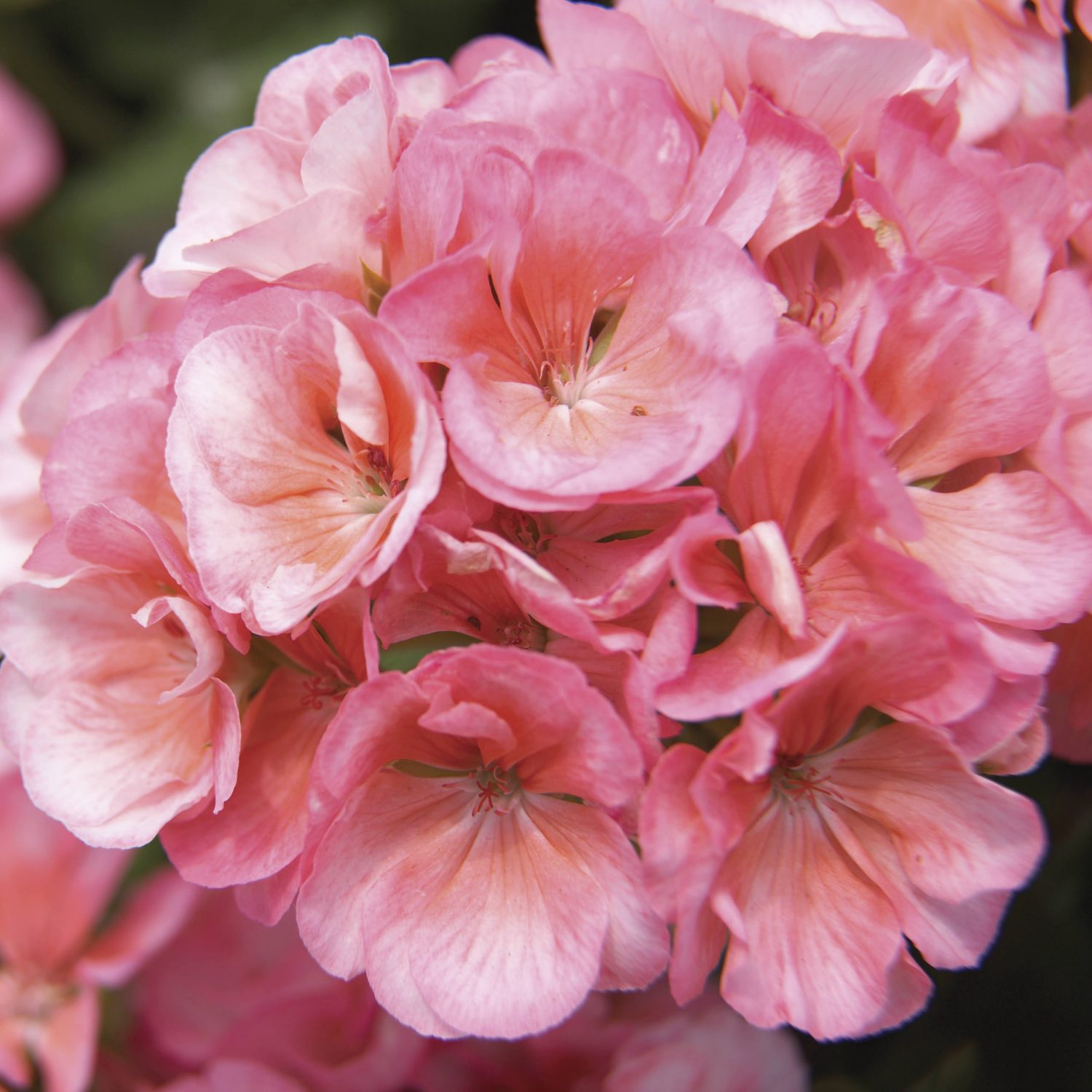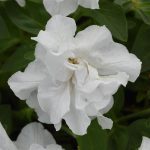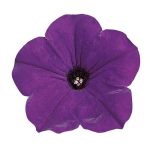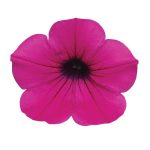Geranium (Pelargonium), Americana Salmon
Price range: $5.99 through $14.99
Plant, Zone 9+
Discount per quantity
| Quantity | 3 - 8 | 9 - 14 | 15+ |
|---|---|---|---|
| Price | Price range: $5.81 through $14.54 | Price range: $5.63 through $14.09 | Price range: $5.39 through $13.49 |
| % Discount | 3% | 6% | 10% |
Description
Americana Salmon Geranium: A Friendly Guide to Color and Care
Warm Welcome
We all love a plant that makes us smile the moment we see it. The Americana Salmon Geranium (Pelargonium × hortorum ‘Americana Salmon’) does just that. Its petals glow with a soft salmon-pink tone that feels like sunrise on a gentle morning. This guide invites you to explore the plant’s charm, learn simple ways to keep it happy, and dream up fresh ideas for your porch, garden bed, or window box. Let’s dig in together.
Meet the Plant
Name and Lineage
- Botanical name: Pelargonium × hortorum ‘Americana Salmon’
- Common name: Americana Salmon Zonal Geranium
- Family: Geraniaceae
The “Americana” series is prized for strong stems, steady blooms, and solid heat tolerance. The Salmon member of the family shines with clusters of semi-double blossoms in a peach-pink hue. Each floret holds a hint of orange and blush, giving the bloom ball a warm, lively look.
Size and Shape
- Height: 14 – 16 inches
- Spread: 14 – 16 inches
- Habit: Upright, mounding, nicely rounded
This medium profile makes it easy to nestle the plant into containers as a “thriller” or dot it through a sunny border for repeated splashes of soft color.
Foliage Features
Bright green leaves form the classic “zonal” band—darker toward the center, lighter toward the rim. The leaves feel plush, storing water the way many geraniums do. Their fresh scent adds another level of delight whenever we brush past.
Why We Love Americana Salmon
- Ever-present color. From late spring well into fall, new bloom heads rise above the foliage like little lanterns.
- Heat savvy. After more than a few hot summers in trial gardens, this variety has proven it can keep flowering when many others pause.
- Water-wise. Once rooted, it tolerates brief dry spells, helping busy gardeners breathe easier.
- Versatile vibe. The soft salmon shade pairs well with deep purples, creamy yellows, or silver foliage.
- Pollinator perk. Butterflies visit often for quick sips, adding motion and life to the scene.
Where It Thrives
- Light: Full sun is best—at least 6 hours daily. In very hot regions, a touch of afternoon shade prevents leaf scorch.
- Temperature: Ideal bloom range is 60 – 75 °F. Plants hold up in higher temps but may pause blooming in extreme heat.
- Hardiness: Treated as an annual in zones below 9. In zones 9–11 it can live year-round outdoors. Everywhere else, we can overwinter it indoors.
- Containers or beds: It shines on patios, balconies, window boxes, raised beds, and classic cottage borders.
Design Magic
Porch Pots That Pop
Pair Americana Salmon with trailing white bacopa and upright purple salvia in a large clay pot. The three-way combo brings balance—spillers, fillers, thrillers—and color harmony that pleases the eye.
Cottage Borders
Use soft pinks, blues, and whites alongside dusty miller. The salmon glow pops against cooler tones, guiding the gaze gently down the garden path.
Modern Mix
In a sleek black planter, combine Americana Salmon with silver licorice plant and chartreuse sweet potato vine. The fresh contrast sets a bold, contemporary mood.
Family Garden Fun
Kids adore bright flowers. Let them pot up a geranium with dwarf sunflower sprouts or patio tomatoes. They’ll watch color and food grow side by side.
How to Care for Americana Salmon
Soil & Potting Mix
- Texture. Loose, well-drained soil keeps roots happy. A commercial soilless blend or homemade mix of equal parts peat or coco coir, compost, and perlite works well.
- pH. Slightly acidic to neutral (6.0 – 7.0).
Watering Wisdom
- Start steady. Water deeply right after planting.
- Feel the soil. In other words, poke a finger an inch deep. If dry, it’s time to water.
- Skip soggy. Roots dislike standing in wet feet. Good drainage is key.
- Container cue. Pots may dry faster than ground beds, especially terra-cotta. Check daily in midsummer.
Feeding for Flowers
- Slow base. Work a balanced slow-release fertilizer into soil at planting.
- Liquid boosts. Every two weeks, drench with a half-strength bloom-booster feed (high middle number). Stop fertilizing six weeks before first expected frost to help plants harden off.
Pruning & Deadheading
- Pinch early. When stems reach four true leaves, pinch the tip. This encourages branching.
- Deadhead blooms. After petals fade, pinch the entire bloom stalk at its base. New buds form quicker, and plants stay tidy.
- Mid-season trim. If stems stretch or leaf color fades, cut back by one-third. Plants bounce back full and strong.
Overwintering Indoors
- Dig or pot. Before frost, lift preferred plants and pot them up.
- Bright window. Place in a sunny south-facing spot.
- Water sparingly. Only when soil feels quite dry. Growth slows, so we let it rest.
- Spring re-entry. After danger of frost passes, harden off outdoors for one week before planting out again.
Pest & Problem Solver
| Trouble | Simple Fix |
|---|---|
| Yellow leaves | Check drainage, reduce watering, feed lightly |
| Bud drop | Too little light or too much shade—move to brighter spot |
| Aphids | Spray firm water jet, follow with insecticidal soap |
| Whiteflies | Sticky trap plus neem oil spray every 7 days until clear |
| Rust spots | Remove affected leaves, improve airflow, avoid wet foliage |
Propagation Pointers
- Cut a 4-inch stem tip below a leaf node.
- Remove lower leaves.
- Dip in rooting hormone (optional but speedy).
- Insert into moist potting mix.
- Keep warm, bright, and slightly covered for humidity. Roots appear in 2 – 3 weeks.
Troubleshooting Quick Guide
- No blooms? Plants likely need more sun or a dose of phosphorus-rich feed.
- Leggy stems? Pinch tips and give stronger light.
- Leaves pale? Add slow-release fertilizer or liquid kelp.
- Edema bumps? Caused by extra water uptake on cool days. Ease up on watering; they usually fade.
Seasonal Care Calendar
| Season | Task List |
|---|---|
| Early Spring | Start rooted cuttings indoors, prep containers, amend soil |
| Mid-Spring | Plant outdoors after frost, add slow-release fertilizer, mulch lightly |
| Summer | Water deeply, deadhead weekly, foliar feed if foliage pales, enjoy nonstop blooms |
| Late Summer | Trim back by one-third if growth stalls, watch for pests |
| Early Fall | Collect cuttings, decide which plants to overwinter, reduce feeding |
| Late Fall/Winter | Keep overwintering plants cool and bright, water just enough to prevent wilt |
Common Questions
Can I grow Americana Salmon from seed?
Seeds won’t grow true to type. Instead, buy young plants or use cuttings.
Will deer eat my geraniums?
Deer usually pass them by, thanks to the aromatic foliage.
Do they attract bees?
Butterflies visit most. Bees prefer single-petal geraniums, yet they still stop by when blooms are plentiful.
How big of a pot do I need?
One plant fills a 10- to 12-inch pot. Use a larger container for mixed designs.
Can I keep it blooming indoors all winter?
Blooms slow with low winter light. You’ll keep leaves, but flowers return once moved back outside.
After More Than a Glance, You’re Ready
We’ve journeyed through every layer of the Americana Salmon Geranium—from its sunrise-soft petals to its easy-going care routine. Now you know how to plant it, feed it, prune it, and even tuck it in for winter. Whether you slip a single plant into a sunny pot or weave a dozen through your flower beds, you’re set to enjoy months of color. Together, let’s welcome these salmon blooms and the joy they bring.
Brighter Tomorrows in Bloom
Additional information
| Weight | N/A |
|---|---|
| Options | Starter Plug – 3 count, 5.5in.(1.25qt) Pot |





